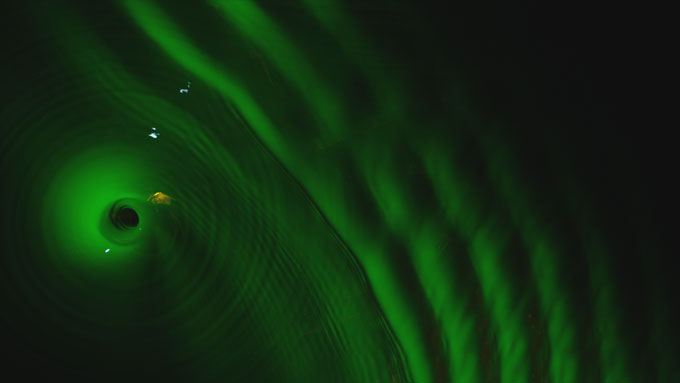This post was originally published on this site
Black holes sit on the cusp of the unknowable. Anything that crosses a black hole’s threshold is lost forever, trapped by an extreme gravitational pull. That enigmatic quality makes the behemoths an enticing subject, scientists explain in the new documentary Black Holes: The Edge of All We Know.
The film follows two teams working over the last several years to unveil the mystery-shrouded monstrosities. Scientists with the Event Horizon Telescope attempt to make the first image of a black hole’s shadow using a global network of telescopes. Meanwhile, a small group of theoretical physicists, anchored by Stephen Hawking — who was still alive when filming began — aim to solve a theoretical quandary called the black hole information paradox (SN: 5/16/14).
When big discoveries happen, the camera is right there — allowing us to thrill in the moment when Event Horizon Telescope scientists first lay eyes on a black hole’s visage. And we triumph as the team unveils the result in 2019, a now-familiar orange, ring-shaped image depicting the supermassive black hole in the center of galaxy M87 (SN: 4/10/19). Likewise, scenes where Hawking questions his collaborators as they explain chalkboards full of equations prove mesmerizing. Viewers witness brilliant minds playing off one another, struggling with mistakes and dead ends in their calculations, punctuated by occasional, groundbreaking progress.
Stunning cinematography and skillful editing lend energy to Black Holes, directed by Harvard physicist and historian Peter Galison and available on Apple TV, Amazon Prime Video and other on-demand platforms on March 2. When the Event Horizon Telescope team begins taking data, we’re treated to a crisp montage of telescopes around the world, all swiveling to catch a glimpse of the black hole. Later, bright sunbeams slice across an office floor while scientists muddle through calculations regarding the darkest objects of the cosmos. Such scenes are punctuated by delightfully strange black-and-white animations that evoke a pensiveness appropriate for contemplating cosmic oddities.
There’s drama too: Event Horizon Telescope’s scientists wrestle with misbehaving equipment and curse uncooperative weather. The theoretical physicists grapple with the immense complexity of the cosmos on slow, distracted walks in the forest.
Other research topics garner brief mentions, such as the study of gravitational waves from colliding black holes (SN: 1/21/21) and black hole analogs made using water vortices (SN 6/12/17). The film treats these varied efforts to study black holes independently; some viewers may wish the dots were better connected.

Still, Black Holes successfully leads viewers through a fascinating, understandable trek across the varied frontiers of black hole knowledge. As Harvard physicist Shep Doeleman of the Event Horizon Telescope team describes it in the film, “we are chasing down something that struggles with all of its might to be unseen.” Pulling us to the very rim of this fathomless abyss, Black Holes invites us to stand with scientists peering over the edge.
